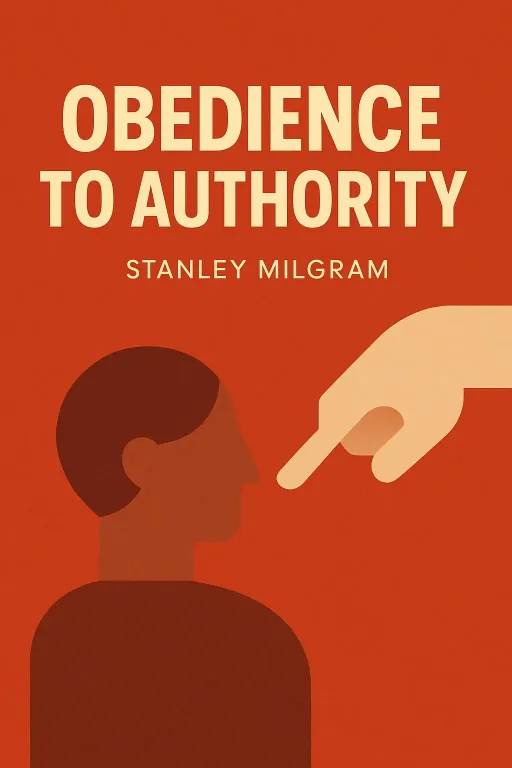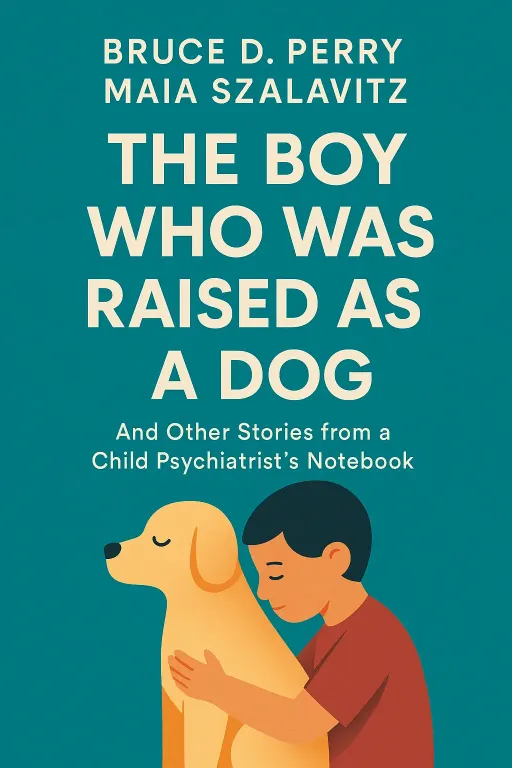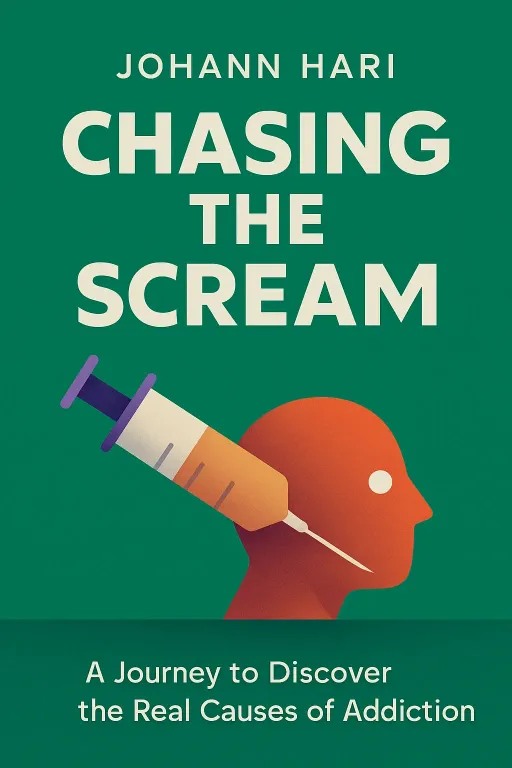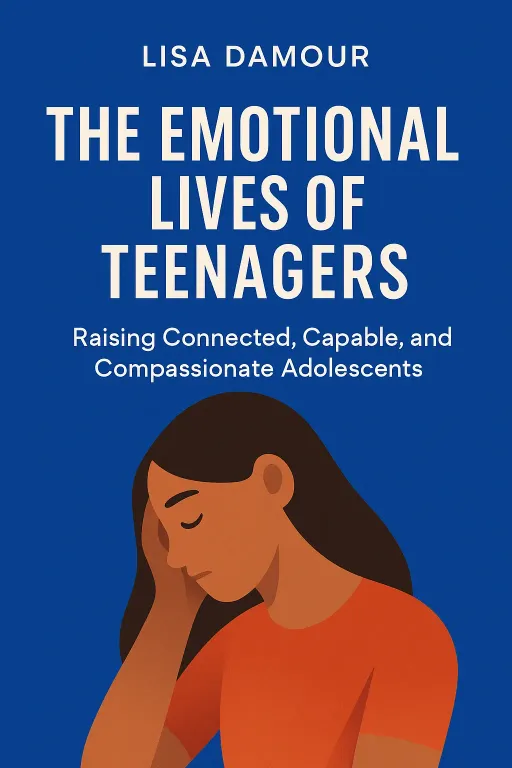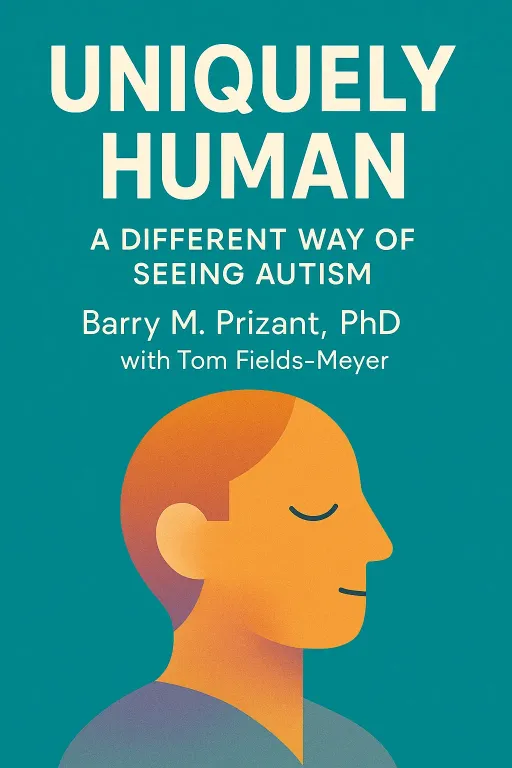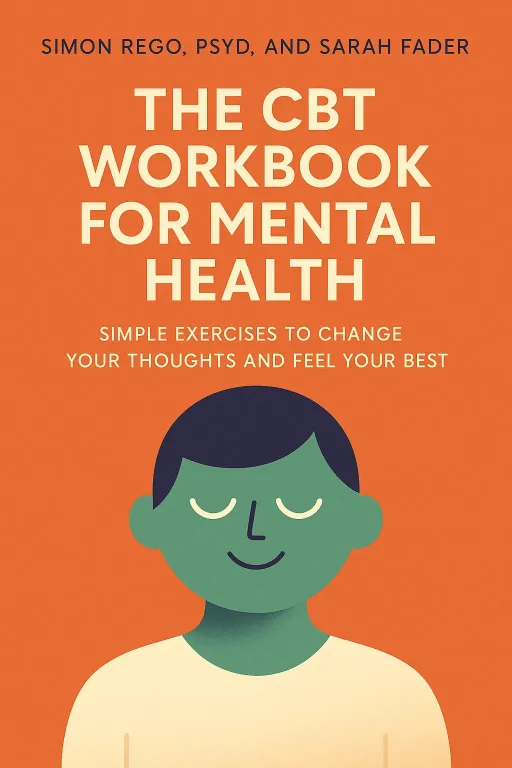
The Mind's Operating System: A Data Analyst's Guide to CBT
12 minGolden Hook & Introduction
SECTION
Nova: What if you could debug your own mind? Not in a metaphorical sense, but with a clear, structured process, almost like troubleshooting a piece of software. What if you could look at your feelings of anxiety or self-doubt, not as mysterious forces, but as predictable outputs from a specific line of mental code?
Laura: That's an incredibly compelling starting point. It reframes the entire conversation around mental well-being.
Nova: Exactly! That's the powerful idea we're exploring today, drawn from "The CBT Workbook for Mental Health" by Simon Rego and Sarah Fader. And I am so thrilled to have Laura here with us, because as a data analyst, your entire world is about finding patterns and making sense of complex systems.
Laura: Thanks for having me, Nova. I'm already hooked. The idea of applying a systematic framework to something that can feel as chaotic as our own emotions is… well, it's very appealing to my inner analyst.
Nova: I thought it might be! So today we'll dive deep into this from three perspectives. First, we'll explore the mind's core operating system—how thoughts, feelings, and actions are linked. Then, we'll discuss how to become a 'debugger' for your own mind by identifying common cognitive bugs. And finally, we'll focus on how to execute new, positive code through a powerful technique called behavioral activation.
Laura: Understand the system, find the errors, and run a new program. It’s a solid plan. I’m ready.
Deep Dive into Core Topic 1: The Mind's Core Loop
SECTION
Nova: Fantastic. So let's start with that core operating system. The foundational principle of Cognitive Behavioral Therapy, or CBT, is that our thoughts, feelings, and actions are all interconnected in a constant feedback loop. The book puts it simply: the way we think about things has a substantial influence on our mood. It’s not about positive thinking; the book is very clear on that. It's about thinking.
Laura: Okay, so it’s not just “think happy thoughts.” It’s about the accuracy of the thoughts themselves.
Nova: Precisely. And the book gives a perfect, everyday example of this loop in action. Imagine you have a friend, and you're feeling a little nervous because they haven't called or texted you back in a day or so.
Laura: Okay, a familiar scenario for many of us.
Nova: Right? The situation is neutral: a message hasn't been returned. But the automatic that pops into your head might be, "She's angry with me. I must have done something wrong."
Laura: And that thought isn't based on any actual evidence. It's an interpretation.
Nova: Exactly. And what's the immediate that follows that thought? Anxiety, maybe some guilt, a little bit of hurt. The thought directly creates the emotion. And then comes the, or in this case, inaction. Because you believe your friend is angry, you might avoid calling them. You don't want to face the conflict.
Laura: So the loop completes itself. The thought—"she's angry"—leads to a feeling of anxiety, which leads to the behavior of avoidance. And that avoidance probably just makes the anxiety worse over time, because the issue is never resolved.
Nova: You've got it. The thought created a reality. You are now as if your friend is angry, even with zero proof.
Laura: That's fascinating. From a data perspective, it's a classic case of drawing a massive conclusion from an incomplete, or even non-existent, dataset. The 'no text' is a single, unverified data point. But the mind extrapolates an entire negative narrative from it.
Nova: What a perfect way to put it. Extrapolating a narrative. And the book argues that this happens to us hundreds of times a day in small ways. We're constantly running these little "if-then" programs in our heads. If my boss looks at me funny, then I'm in trouble. If I make a mistake on this report, then I'm incompetent.
Laura: And the CBT process, then, sounds like it forces a data validation step. It makes you pause the program and ask, "Wait a minute. Is this initial thought actually supported by the evidence?"
Nova: That is the perfect transition to our next point. Because to validate the data, you first need to be able to spot the error in the processing. And that brings us to debugging the system.
Deep Dive into Core Topic 2: Debugging the System
SECTION
Nova: So, if our minds are running these faulty programs, how do we find the specific line of code that's causing the problem? The book calls these errors "cognitive distortions." They are common, predictable patterns of irrational thinking. They're the bugs in our mental software.
Laura: Cognitive distortions. So these are named, identifiable types of errors?
Nova: Yes, and they are incredibly helpful to learn. The one in our last example—assuming your friend is angry—is a classic called "Mind Reading." You're acting like you know what someone else is thinking without any real evidence. Another huge one the book talks about is "All-or-Nothing Thinking."
Laura: Binary thinking. It's either a total success or a complete failure.
Nova: Exactly. You get a 95 on a test and your first thought is, "Why did I miss that one question?" You see it as a failure instead of a 95% success. There's no middle ground. This kind of thinking, the book explains, is a recipe for disappointment because life is almost never all-or-nothing.
Laura: That makes sense. It's a flawed logic gate. It only accepts 0 or 1, when reality is a spectrum of floating-point numbers. So, knowing the names of these bugs is the first step. How does the book suggest we catch them in the act?
Nova: With a beautifully simple and structured tool: the "Thought Record." This is the core practical exercise in the workbook. It's essentially a worksheet where you log what's happening. You write down the Situation, the automatic Thought that popped into your head, and the Feeling it created.
Laura: You're documenting the error state.
Nova: Precisely! You're creating a log file for your mind. But then comes the crucial part. The next columns on the worksheet prompt you to challenge that thought. You have to look for evidence that supports it, and evidence that support it. Then, based on that evidence, you're tasked with creating a more balanced, rational thought.
Laura: I love that. It's a structured root cause analysis for an emotion. It takes this vague, overwhelming feeling of anxiety and breaks it down into a concrete problem to be solved. Instead of just "I feel bad," it becomes "The data shows my initial conclusion was likely flawed; a more probable conclusion is X."
Nova: You've captured the essence of it perfectly. For the friend who didn't text back, the balanced thought might be, "While it's possible she's upset, it's far more likely she's just busy with work or family. I don't have enough information to conclude she's angry."
Laura: And just articulating that alternative thought must have an immediate effect on the feeling. The anxiety level would drop, because you've just introduced a more probable, less threatening hypothesis.
Nova: It does. It might not erase the feeling completely, but it dials it down from a 10 to a 3. It gives you breathing room. And as the book says, change takes practice. The more you use a thought record, the better you get at catching these distortions in real-time, even without writing them down.
Laura: It's like training a machine learning model. The more data and corrections you feed it, the more accurate its future predictions become. You're retraining your own brain to think more rationally.
Nova: Yes! And that's the cognitive part. But finding the bug is just step one. The book shows we also need to run the patch. We have to change our behavior. This is where it gets really proactive.
Deep Dive into Core Topic 3: Executing New Code
SECTION
Laura: Okay, so we've identified the faulty thought and challenged it. What's the behavioral component?
Nova: This is a technique called "Behavioral Activation," and it's incredibly powerful. The core idea is that you don't have to wait to motivated to do something. In fact, for people struggling with depression or anxiety, motivation is often the last thing to show up. Behavioral activation says that action must come first. The action itself will change how you think and feel.
Laura: Action precedes feeling. That flips the usual script.
Nova: It completely flips it. Let's take another story from the book. Imagine you have a big test coming up. You feel incredibly anxious, and the thought running through your head is, "I'm going to fail this. I'm just not smart enough." You're supposed to go to a study group, but you're convinced it's pointless. Your feeling of anxiety and your thought "it won't help" are telling you to cancel, to stay home and worry.
Laura: The default program is running: feel anxious, retreat.
Nova: Right. Behavioral activation is the manual override. The book says, instead of listening to that feeling, just go through the motions, one tiny step at a time. Don't think about the whole task. Just focus on the first step: gather your books and put them in your bag. That's it.
Laura: A single, manageable command.
Nova: Yes. Once that's done, the next step: walk to the door. Then: get in the car. Then: drive to the library. Each step you complete is a small victory. It's a piece of evidence that contradicts the thought "I can't do this." You doing it.
Laura: Ah, so it's about generating new data. Your brain's current dataset says "I'm a failure, I can't do this." Each step you take—getting in the car, meeting your friends—is a new, conflicting data point. It's real-world evidence that your initial thought was wrong.
Nova: You are generating new data! I love that framing. By the time you get to the study group, you've already achieved a series of small successes. You've proven to yourself that you are capable of taking action. And chances are, the act of studying will make you feel more prepared and less anxious. The behavior changed the feeling.
Laura: That's brilliant. The automatic program is 'feel anxious, do nothing.' Behavioral activation is you, the programmer, manually inputting a new set of commands to force a different outcome. The action creates the data for the new feeling. You can't accomplished until you something to accomplish.
Nova: That's the whole principle in a nutshell. And it applies to everything, from getting out of bed when you're depressed to going to the gym to making a difficult phone call. Don't wait for the feeling. Do the behavior. The feeling will follow.
Synthesis & Takeaways
SECTION
Nova: So, as we wrap up, we've really walked through a three-step process from the book, filtered through this amazing analytical lens. First, we understand the mind's operating system: the Thoughts-Feelings-Actions loop.
Laura: Then, we learn to be a debugger, using tools like the Thought Record to find the cognitive distortions, the bugs in our code.
Nova: And finally, we execute a new program through Behavioral Activation, using action to create new feelings and thoughts. Laura, from your perspective as a data analyst, what's the biggest takeaway for you from these ideas?
Laura: For me, it's the profound shift from being a passive user of your own mind to becoming an active analyst of it. It demystifies mental health and turns it into a skill you can learn and a system you can understand. It's empowering.
Nova: I agree completely. So, what's a simple, actionable piece of advice we can leave our listeners with today?
Laura: I think it goes back to data collection. The actionable step isn't some huge life change. It's just to start collecting the data. For just one day, try to catch one automatic negative thought that pops into your head. Don't judge it, don't fight it. Just notice it. And then ask one simple question: "What's the evidence for this thought?"
Nova: Is this data, or is it just a story I'm telling myself?
Laura: Exactly. Is it data, or is it a narrative? That one question is the first step in debugging your own mind. And it's a step anyone can take, right now.
Nova: A perfect, practical place to end. Laura, thank you so much for bringing your sharp, analytical perspective to this. It’s been an illuminating conversation.
Laura: The pleasure was all mine, Nova. Thank you.
